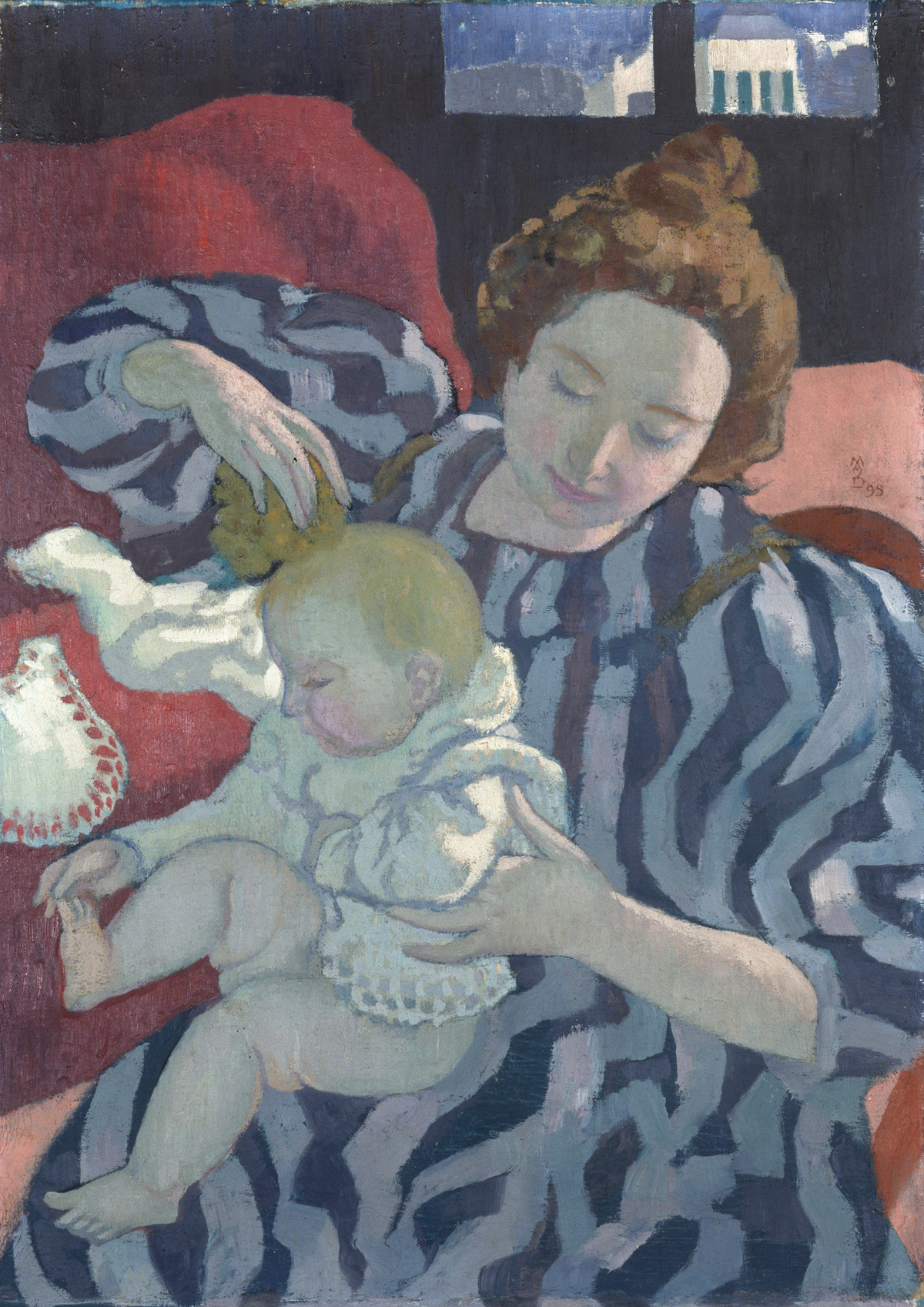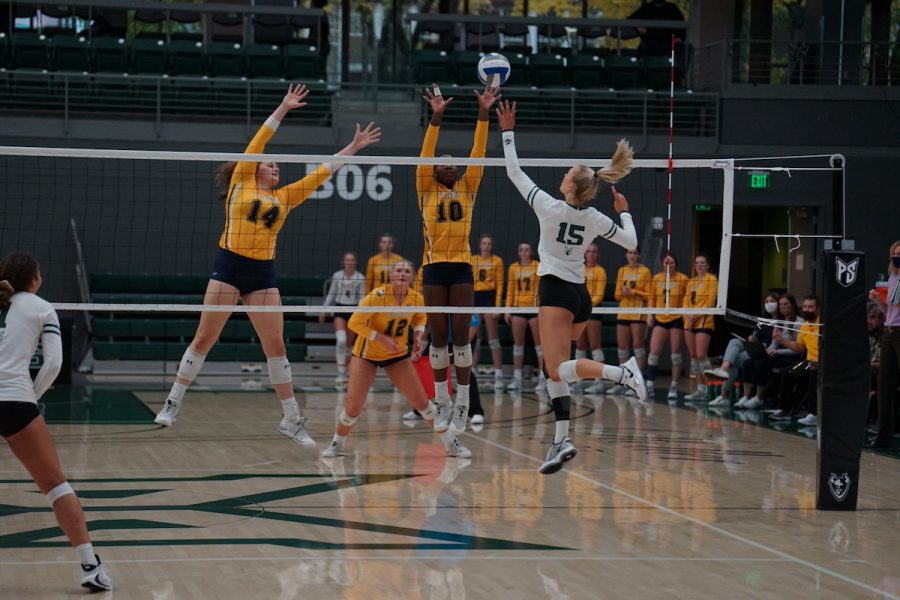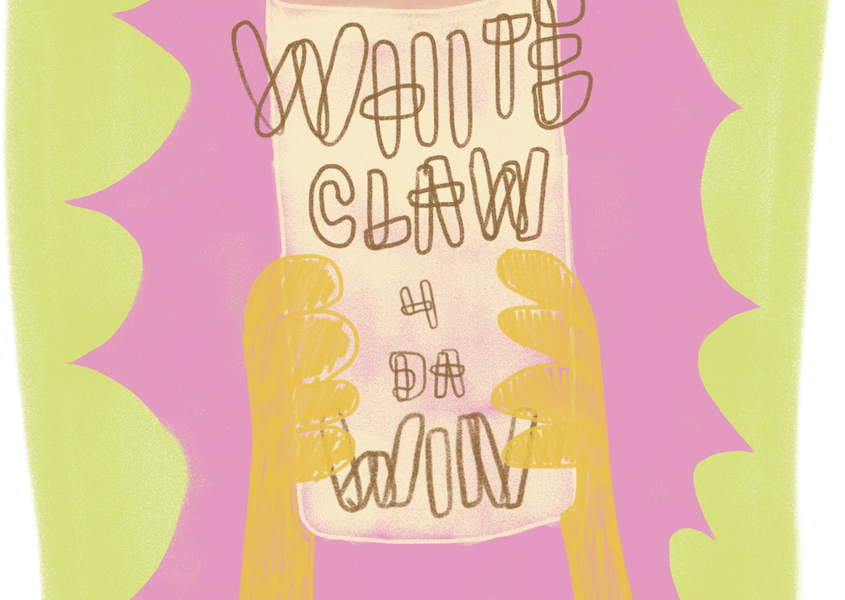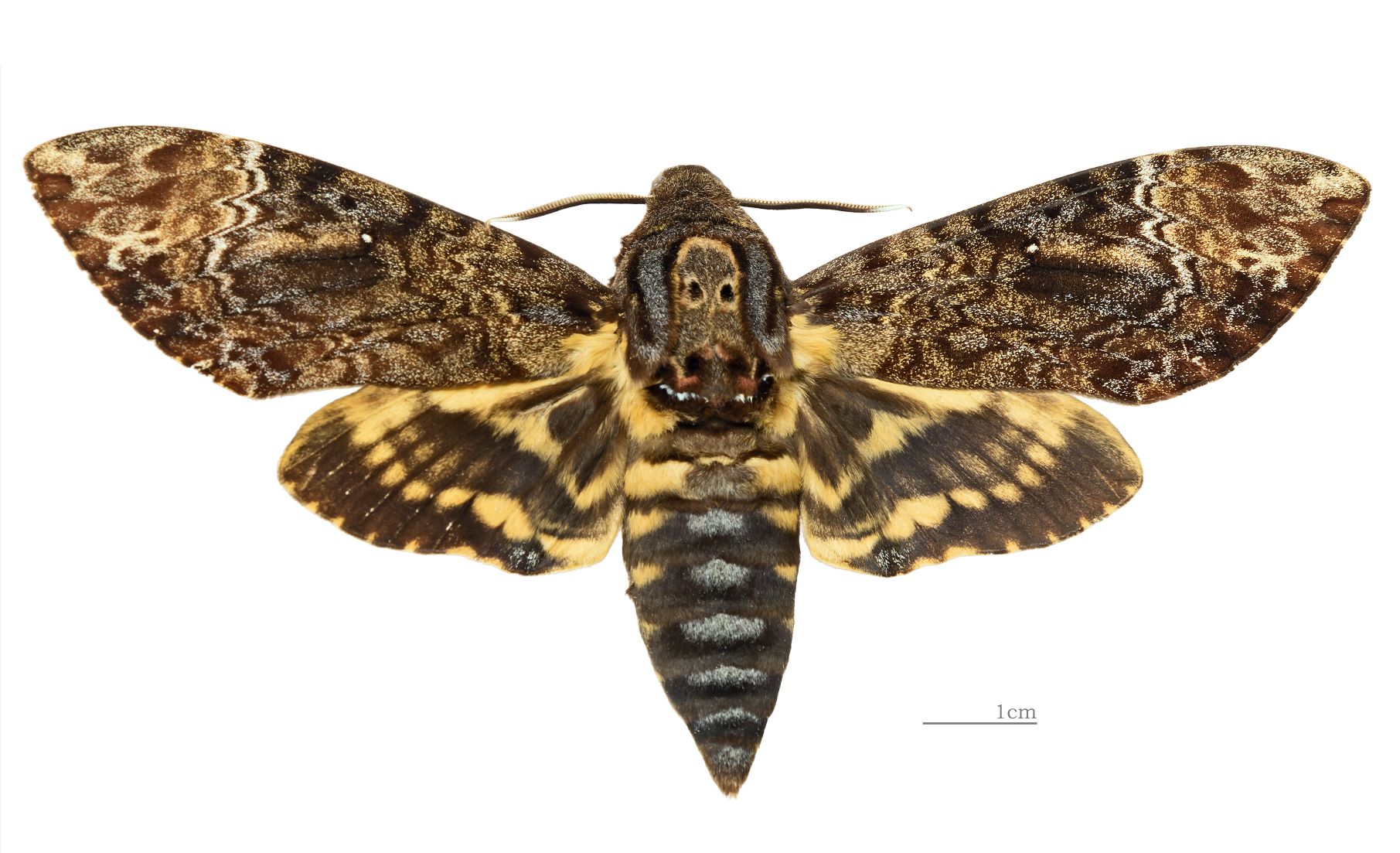At first glance, the French lithograph print was deceptively simple: a pink-on-pink room with a massive chandelier dominating the foreground, framed by a wall of floral wallpaper behind it. The scene was illustrated in blurry, vertical streaks, forcing the viewer to try to make out people and objects through an ambiguous haze. Every element appears designed to keep viewers guessing, to keep them wondering: “What exactly is going on here?” It’s the kind of scene a person could look at for years and still find something new.
Mary Weaver Chapin is that person.
“I’ve worked on these for years,” Chapin explained, gesturing towards the print on the gallery wall. “It was only recently that I noticed this figure kind of hiding, right in the foreground, all this time.” She pointed to a spot on the lithograph, and the shape of a woman in a blue checkered dress emerged from the patterns and lines of the print, like a pattern in a psychologist’s inkblot.
A resident curator at the Portland Art Museum, Dr. Chapin is a specialist in prints and drawings, and one of the curators who organized the exhibit of which the print is just a small part. The mysterious lithograph in question is only one of scores of works on display at the Portland Art Museum’s current special exhibition on the Nabis—a group of innovative painters who lived and worked in Paris during the late 19th and early 20th centuries.
The exhibit, Private Lives, shows the work of the Nabis’ four core members—Pierre Bonnard, Édouard Vuillard, Maurice Denis and Félix Vallotton—as they explored subjects and scenes within the intimate family home. With an unusually large selection of pieces, the exhibit’s space takes up multiple galleries, showing a collection of artwork from the four artists, all of them connected to subjects within the realm of private family life. Grouped by theme, each section attempts to portray the different ways in which members of the Nabis approached the same subjects.
“We wanted to see how the different artists would respond to the same sort of setting,” Chapin explained of the show’s structure. Presented together, the paintings represent the culmination of four unique artistic perspectives, all intensely focused on the same environment: the realm of private lives.
It’s difficult to understand the Nabis’ fixation with family and home spaces without first understanding their approach to art in general. The group—which took their name from the Hebrew word for prophet—saw themselves as the bearers of an entirely original type of creative work.
“They wanted to be these prophetic voices of a new type of art,” Chapin said. “They didn’t want to be just like the Realists, who were giving you every photographic detail; they didn’t want to be like the impressionists, who showed you every flickering moment of life.”
Chapin pointed to an oil painting’s narrowly-cropped frame—Bonnard’s sister thoughtfully finishing a meal titled The Checkered Blouse. “This is like the mind’s eye,” she said. “This is what the heart sees…it has to be true to the artist’s feeling and the shape of the painting.”
Bonnard’s sister is rendered with vividly stylized strokes that emphasize pattern and emotion, without any visible regard for photorealism or perceptual accuracy. Her checkered blouse—the painting’s namesake—is ill-fitted to the figure wearing it, appearing as almost a sheet of expressive paint strokes rather than a dress. The only feature rendered in truly clear detail is the subtle play of emotion on the subject’s face as she closely examines the last bites of her meal. What that emotion is, however, is left to the viewer to decide.
The added subjectivity of being painted from memory seems to further distill the artist’s emotionally charged experience of the scene, and further stresses the Nabis’ focus on subjective feeling over accurate portrayals. Their stylized treatment of meaningful emotions in the space of quiet, oftentimes private moments, ultimately earned them the title of Intimists, which Nabis member Pierre Bonnard accepted as a valid descriptor of the movement, so long as it referred to artists who had a “taste for daily spectacles” and an “ability to draw emotion from the most modest acts of life.”
Bonnard and his peers would find an endless supply of these modest acts of life in the confines and protected spaces of the family home. Visitors to the exhibit will see paintings and prints of family members, pets, close friends and loved ones, each depicted in domestic interiors.
Many of the paintings at Private Lives are of people, whether alone or in small groups, but Chapin was careful to point out that these are not typical portraits.
“He’s just capturing this one moment, and imbuing it with this sort of feeling and importance for the ordinary moment of life,” she said, pointing to another painting of Vulliard’s sister sewing by a window. “She’s deeply enmeshed in her surroundings, so it’s almost a portrait of her by proxy.”
Despite the detail paid to the sister’s environment, her actual facial features are undefined and hazy. Without context, she couldn’t just be Vuillard’s sister—she could be almost anybody.
“I think that it was so it would have a wider meaning,” Chapin explained. “It’s not just a picture of [Vulliard’s sister]…but it becomes that much more universal that way.”
Another enduring fixation of the Nabis were pets, often their own. The exhibit is filled with prints and paintings of Vallotton’s many cats, and intimate scenes of Bonnard’s sister’s dog. A partial explanation for this can be found in the rise of a genuine pet culture in Europe at the time, with animals taking places in people’s families the way they are today.
Chapin explained that one of the group’s members loved babies and dogs because they were an ode to the group’s uncompromising obsession with focusing on the beauty of the present moment.
“In some ways they are the best conveyors of feeling,” Chapin said. Each portrayal of pets and children sees them totally engrossed in their surroundings and environment, engaged in whatever scene is unfolding before them.
After years of researching the pieces in the exhibit—along with months of planning and organizing—Chapin is optimistic that this feature of the Nabis’ work will stand out to visitors.
“I hope they’ll come away with an ability to look at their surroundings with new eyes,” Chapin explained. “Sometimes we rush through our days, [but] here we can experience what one critic called the ‘tragedy and mystery of daily life.’”
Visitors who would like to come and experience the work of the Nabis for themselves can view their art on display at Portland Art Museum’s Private Lives exhibit, showing from now until Jan. 23.






